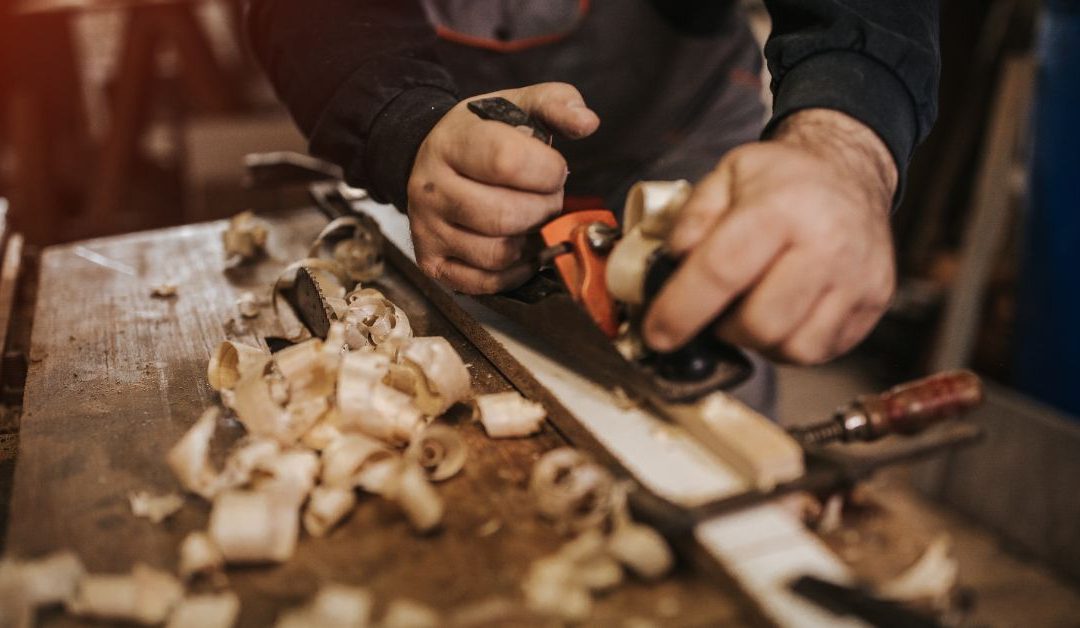The Spread Of Moroccan Woodworking Techniques And Designs Throughout The Arab World
Moroccan woodworking has inspired people for a long time, starting from the ancient city of Casablanca. These beautiful crafts have influenced art in countries like Egypt and Syria too.
In this article, we’ll learn how Moroccan woodworking grew from Casablanca and spread to Cordoba and other parts of the Middle East.
We’ll talk about the important influences that made this happen and why people all over the world love Moroccan woodworking.
Additionally, we’ll examine what makes these pieces unique from other styles found in different parts of the globe.
History Of Moroccan Woodworking
The art of Moroccan woodworking is a beautiful tale, like the intricate pieces it creates. Each artisanal craft begins with an idea and ends in a unique piece crafted from the precious woods of Morocco.
From the shores of Casablanca to places like Cordoba, Moroccan woodworking has been popular for many generations. This is because of its beautiful designs and cultural influence.
For hundreds of years, families have passed down the woodworking tradition. This has changed as they introduced new techniques. Today’s artisans use tools like rasps, saws, and planes to create functional and beautiful masterpieces. They mix old and new methods to show off their own unique style.
The art of Moroccan woodworking is now known around the world. People from different countries and cultures embrace it. Bringing along new friends and finding unity through this shared practice. It’s not only about creating things, but about connecting people from different places too.
This delightful process helps us appreciate our differences while recognizing the beauty we all share in common.
Casablanca: Cradle Of Moroccan Woodworking
For centuries, Morocco’s woodworking techniques and designs have a connection to its history. Casablanca, a lively coastal city, has been a hub for skilled craftsmen who create beautiful pieces of art. They use traditional materials like cedarwood and brass and hand tools to carve shapes inspired by nature and religion. These skills were then passed down through generations and spread to other countries.
Today, you can see these techniques in many places, especially in regions with a Muslim presence like Spain’s Cordoba area. The influence of Moroccan artistry is visible in homes across the Middle East and beyond, both in modern and old examples. The craftsmanship from Morocco continues the celebration and admired around the world.
Expansion Of Moroccan Woodworking Beyond Casablanca
Woodworking from Casablanca has become an important part of Arab culture with its unique designs and techniques. Each piece made is a representation of their culture and skills, passed down for generations. This craftsmanship has influenced many cultures over time.
As Morocco traded with other Arab regions, they shared knowledge about woodworking. This led to a mix of traditional Moroccan styles with new ideas from different places like Cordoba and Damascus. The craft grew, and more people learned these skills for making furniture and decorations.
Woodworking in Casablanca became a symbol of unity among Arab nations. This spread its impact across the region through diverse influences.
Influence Of Moroccan Woodworking In Egypt
Moroccan woodworking techniques and designs have had a big impact on Egypt’s culture. They shared their styles and methods through trading, which brought new building materials and designs to Egypt.
Moroccan-style carpentry is famous for its detailed and fancy decorations. They have things like pointed arches, calligraphy carved into wood, and delicate fretwork on windows. They add colorful hand-painted ornaments to walls too.
These styles from Morocco were then brought to Egypt, and they are still used in buildings like mosques and palaces. Not only do they look nice, but they as well make the buildings stronger and last longer.
Trade networks were powerful because they allowed countries to share things like goods, ideas, and styles. This made a mix of different cultures and looks that we can still see in the region today.
Influence Of Moroccan Woodworking In Syria
Moroccan woodworking has influenced the Arab world, especially Syria. The maghrebi style, coming from North Africa with Moorish influence, has spread to different cultures. Syrian craftsmen use Moroccan design elements and methods to join wood and paint geometric patterns.
The following table shows the major similarities between Syrian and Moroccan woodworking:
| Similarities | Syrian Woodwork | Moroccan Woodwork |
| Joining Methods | Dovetail jointsLap jointing | Mortise & tenonBiscuit joinery |
| Painting Style | Floral motifsArabic calligraphy | Geometric shapesZellige tiling |
Both Morocco and Syria have unique woodworking styles that you can see in their furniture at homes and businesses. They use traditional methods passed down for many years, which makes their designs special to each region. Even though there are differences between the two countries, it doesn’t mean one is better than the other. Both have rich cultures when it comes to woodworking, and they are proud of their heritage.
Woodworkers in the Arab world keep getting better at their craft while also honoring their old traditions. They are embracing modern techniques without forgetting their history. This means the woodworking industry will keep growing and flourishing. As long as they keep their high standards in craftsmanship and stay true to their values.
Influence Of Moroccan Woodworking In Andalusia
Moroccan woodworking spread to many places, connecting cultures like art. One of these connections was from Casablanca to Cordoba in Andalusia. People there loved the vibrant colors and unique patterns of Moroccan wood carvings.
In Andalusia, Moroccan woodworking became an important part of the local tradition. They used bright colors like orange-reds, blues, yellows,, and greens to make homes cozy and beautiful. They as well used carved wood to decorate doors and windows, making buildings look special.
As time went on, they started making more complex things like furniture with curved shapes and delicate carvings. This made each item have its special personality. Andalusia still shows Moroccan influence through wooden mosaics called marquetry. You can see these beautiful designs in churches and houses across the region.
Even today, you can find the mark left by Moroccan craftsmen in places like museums in Seville. Many people have admired their beautiful wood carvings for centuries, and they continue to love them.
Moroccan Woodworking Techniques And Design Elements
Moroccan woodworking techniques and designs have spread throughout the Arab world. From Casablanca down to Cordoba. For centuries, Moroccan craftsmen used local materials and traditional tools. All to make stunning furniture.
Wood is a very important material for crafting in this region. It’s strong, durable, and looks great. They use different types of wood depending on what they’re making. For detailed carvings, they use cedarwood. For more stable and supportive pieces, they use hardwoods like oak or walnut.
The unique design of Moroccan woodwork is becoming popular in the Arab world too. It has complex patterns and natural designs that show a connection between nature and human skill. The bright colors make these artworks eye-catching and attractive.
Moroccan-style furniture not only looks beautiful but works well too. Tables, chairs, beds,, and other pieces made with these techniques are comfortable and long-lasting. So, it’s a good choice for people who want special and high-quality furniture.
Popularity Of Moroccan Woodworking In The Modern Era
Moroccan woodworking techniques and designs are so loved all across the Arab world, from Casablanca to Cordoba. In Morocco, these special skills have a long history. This includes detailed carving, beautiful colors, and captivating geometric patterns. Recently, there has been a big interest in Moroccan woodwork, and you can see it in many places, from home decor shops to fashion boutiques.
Because it’s so popular, many Moroccans now have furniture made by their country’s master woodworkers. In a 2020 survey, it was thenv found that almost two-thirds of all Moroccans own furniture crafted by these skilled artisans.
| Survey Results | Percentage |
| Own Furniture Pieces Crafted By Master Woodworkers | 64% |
| Prefer Handmade Products Over Mass Produced Items | 55% |
| Believe Their Home Decor Reflects Their Cultural Identity | 48% |
Many people love Moroccan woodworking techniques today. They appreciate handmade items more than mass-produced ones. This makes the traditional crafts even more popular worldwide. People find value in having pieces that reflect their cultural identity.
From beautiful doors to wooden trays and boxes, each piece shows Morocco’s rich artistic history. It will keep inspiring people for a long time. The woodworking industry has a lot of potential for growth, and it’s not only about looks. It provides economic opportunities and cultural pride for the Arab World.
Comparison Of Moroccan Woodworking To Other Styles
Moroccan woodworking has been important in Arab culture for a very long time. It has unique traditions that have stayed through generations. Different regions have exchanged ideas and adapted these traditions.
Comparing Moroccan woodworking to other Arab styles shows how cultures influence each other’s art over time. They use similar techniques, but Moroccan woodworking stands out with bold colors. Plus, with using as well geometric patterns, and ornamental carvings on furniture and decorations.
Morocco’s influence is visible in many other countries’ designs too. They share an artistic heritage and love for craftsmanship. This shows how interconnected these societies were in the past, which still affects us today.
The Future Of Moroccan Woodworking
The journey from Casablanca to Cordoba has been a long one, and Moroccan woodworking techniques have spread far and wide. But now that we’ve looked at the past, it’s time to turn our attention toward the future of this ancient craft. What does the next generation of Moroccan woodworkers have in store for us?
In Morocco, wood carving is a mix of old and new. Some craftsmen use traditional methods, but others are trying out new materials and styles.
Younger artisans are getting creative and using different shapes and colors to make unique art pieces. They want to keep the Moroccan culture alive but also make it more modern.
This change is essential to keep the tradition going into the future. More people notice their work and share the beauty of Moroccan woodwork with others in the Arab world.
Frequent-Asked Questions
How Expensive Is Moroccan Woodworking Compared To Other Styles?
Moroccan woodworking can cost more than other styles because they use high-quality materials. But it’s worth the price because of the amazing craftsmanship and beautiful designs. Moroccan woodworkers take pride in their work, choosing the best woods and creating pieces that will be valuable for a long time.
What Type Of Wood Is Always Used For Moroccan Woodworking?
As the adage goes, ‘you get what you pay for’ and Moroccan woodworking is no exception.
Wood carving in the Arab world has become very popular because it looks amazing and lasts a long time. They use special wood like cedar, juniper, olive, and pine to make it. The craftsmanship is so good that it can stand the test of time and still look beautiful for many years.
The wood they use is sustainable, meaning they make sure to get it in a way that doesn’t harm the environment. This way, they can keep making these wonderful carvings for a long time without hurting nature.
Is Moroccan Woodworking Still Popular Today?
Moroccan woodworking is still very popular today, and many people love to explore its materials and cultural meanings.
Woodworkers use both traditional techniques like marquetry and fretwork. Plus, the modern methods like laser cutting for their designs.
They use different types of wood, like rosewood, cedar, oak,, and walnut. These have special meanings related to their beliefs and traditions.
Through their woodworking, artisans express themselves and keep Morocco’s culture alive.
Moroccan woodworking is a powerful way for people to show their creativity and share their culture with the world.
What Are The Most Common Design Elements In Moroccan Woodworking?
Moroccan woodworking is famous for its detailed and fancy designs that honor the country’s culture.
Craftsmen use several design elements to make greater results. Some of these are geometric patterns, floral patterns, and arabesque motifs like scrolls or stars.
Craftsmen combine these elements to create beautiful art that they pass down through generations.
How Long Does It Take To Learn The Techniques Of Moroccan Woodworking?
Learning Moroccan woodworking techniques depends on individual skill levels and tools.
For beginners, it may take weeks or months to get good at cutting, sanding, and finishing.
Experienced people can do these tasks in less time, sometimes only days or hours.
With practice and dedication, mastering traditional designs in this craft can be achievable in a short time.
Moroccan woodworking is an ancient craft that’s still loved today. It takes time to learn, but the beautiful designs are worth it.
On average, it takes about 40 hours or more to get good at Moroccan woodworking. The intricate patterns and elegant carvings make it different from other styles, making it perfect for home decor.
As people look for ways to decorate their homes, Moroccan woodworking will always be a classic choice.







